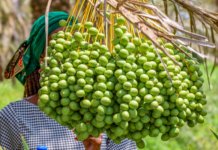Warm climates never suspect hail will put their crops in danger, but expecting the unexpected when it comes to weather is the new normal. Agriculturalists in Africa must consider options for protecting their properties. A proactive approach saves financial heartache and administrative headaches in the long term, so implement one or all of these recommended strategies.
Harvest Insurance
Crop insurance is a fail-safe for those who want hail-prevention infrastructure, but later may present more opportune timing. Navigating this realm is intricate because of several factors. Some African nations have index-based insurance policies instead of parametric, so read the fine print on how and when payouts will happen.
Individual compensation products, like some hail policies, could cover all crops but several may only protect in-transit inventory. Continuous protection is available from certain providers, with products protecting irrigation systems, vehicles and harvests.
Payouts usually consider the average yield in an area against market prices, though every policy may vary. Risking a crop like wheat, which provides nutrition to 3.4 billion people worldwide, is not an option given the current food scarcity crisis.
Agrivolatics
How could placing solar panels on a farm make agriculture more hail-resistant? Modern modules undergo a strict evaluation to be resilient against numerous environmental stressors, including fire, wind and hail. Energy experts craft panels that undergo rigorous testing and certification with these considerations:
- The front glass is at least 3.2 millimeters thick and tempered.
- Modules pass the International Electrotechnical Commission’s 61215 10.17 hail standard, which tests for visual damage from 11 impacts of 25 millimeters at 51 miles per hour.
- Panels must have 5% or less power losses after enduring hail.
- Reinforcement should include sturdy frames and support bars with tracking allowing optimal tilt to at least 60 degrees or go into a hail stow mode.
Severe weather will worsen, and hail size and ferocity may exceed expectations. However, compliance and testing will adapt. The likelihood of solar panels remaining strong against nature is higher than the crops, primarily if they are smaller 60-cell variants. Solar insurance and warranties are usually available through manufacturers.
Smart Detection Systems
Radar gets more accurate and capable by the year. It has been dependable for predicting and tracking severe weather for decades, so incorporating these technologies into agriculture is an obvious prevention solution.
Incorporate on-site smart systems or stay connected to local weather services. Technology may identify prospective size before the onslaught begins, preparing farmers for softball-sized hail that could damage sheds and homes or pea-sized hail that is easier to defend against.
Hail Capture and Destruction Tools
The several primary technologies for stopping hail in its tracks are nets and polytunnels. Hail nets stop the ice before it hits the ground. As it melts, the ice drips onto crops to support yield and water conservation. Polytunnels work similarly by providing a canopy over crops, though the polyethylene cover may not be robust enough depending on the hail’s size.
Hail cannons are another device in the market. However, farmers should practice caution when investing in these tools. Research is minimal, and their efficacy is questionable. They promise to send shock waves at hail, breaking them apart to lessen their damage potential. Most evidence recounting their success is anecdotal.
Natural Responsive Solutions
Protecting farms against hail includes more than expensive technologies and insurance. These are practical options to take once hearing about an oncoming storm:
- Early harvesting: Crops close enough to the end of their growth cycle may be worth picking before a storm to capitalize on some yield.
- Pod sealants: Spraying these surfactants on applicable plants can reinforce their leaves.
- Planting hail-tolerant crops: If the land allows, choosing heartier root and cruciferous vegetables could be lucrative if the region is hail-prone. Note there is no such thing as a hail-proof crop.
Preparation Is Peace of Mind
Hailstorms in Africa may be infrequent in some areas, but South Africans anticipate it. Worrying over the farm’s state during potentially dangerous weather is less of a priority than resident and employee safety. Allow focus to remain on protecting people as preventive measures shoulder the anxieties for the rest of the land. When the bad weather day begins, response and recovery are more graceful and productive.

Jane is an agriculture and environmental journalist and the founder and editor-in-chief of Environment.co, where she covers sustainability and eco-friendly living.








